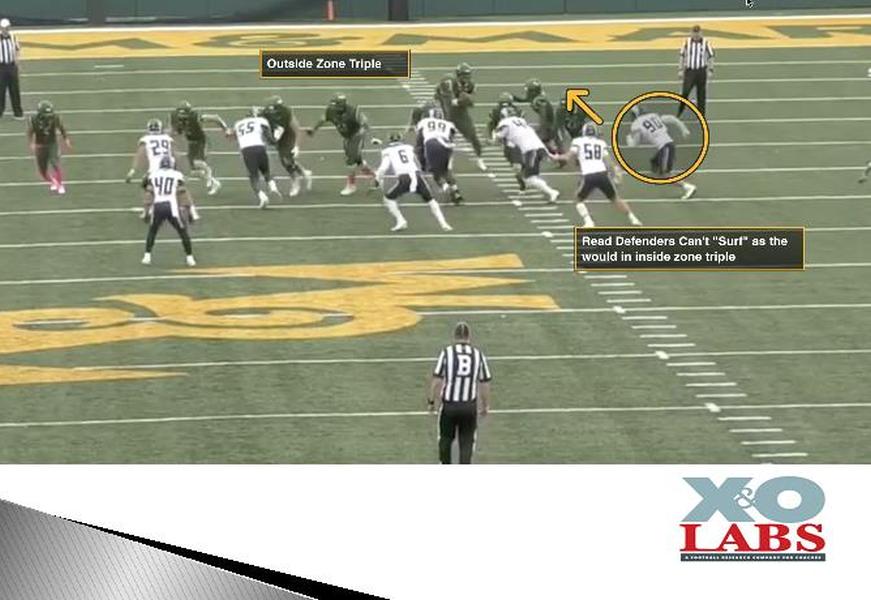By Mike Kuchar with Mario Acitelli
Run Game Coordinator/Offensive Line Coach
University of William and Mary
Twitter: @CoachAcitelli
The genesis of the idea occurred in 2021 when the William and Mary offensive staff felt they were getting too much pressure off the backside of the Tribe’s most efficient run concept, the outside zone. That and linebackers were finding ways to create run-throughs so the play could not get started. “When you run the scheme as much as we do, linebackers are going to push so your angles get shaky,” he said.
So, he and the William and Mary staff spent the entire off-season digging deeper into how to solve the problem. They tinkered with Nakeds but that didn’t give them the solution they needed. They wanted to keep the ball on the ground. “You can’t run wide zone with no backside edge control consistently,” he said. “Defenses will adapt by pushing second-level defenders. You have to build controls in to handle that.” The answer took shape in the form of pure triple option concepts on the backside. It made sense. It’s been done before off the inside zone, so why not off of the outside zone? The wide zone action lends itself to read defenders not being able to “surf” and play both the quarterback and the dive. Plus, it made things easier for skill players who are used to doing those things. Last season, William and Mary played 132 snaps with two quarterbacks on the field.

We’re going to dive into how the staff at William and Mary builds these triple option concepts off its wide zone run play.
RB Aiming Point: Why Pistol Works Better
William and Mary have been a Pistol operation for the last couple of seasons, which essentially contributed to backside edge defenders being able to run down the play. So, when devising these read elements, Coach Acitelli thought it best to stay in gun alignments so that the quarterback could see the read. “The hardest part in sidecar alignments is that the back is not in line with the Center which is an invaluable coaching point to run the play successfully,” he said. “You can get backdoored in Gun by the backside linebacker. If the play is in Pistol or under Center, the linebacker cannot backdoor you and make the play.”
This is why the read element works best in sidecar alignments. He did mention that the offensive line has to be more square in the sidecar than in Pistol. “If you are uncovered (lineman) working to a second-level defender in the sidecar, you can’t be as wide,” he said. “You have to tempo yourself. That is a hard thing to learn and understand, so it took a lot of reps.”
We’ll dive into those read elements shortly. But first, these are the base ways William and Mary run the outside zone. It’s important to note that different terms are used to call the play to the three-surface side vs. the two-surface side.









